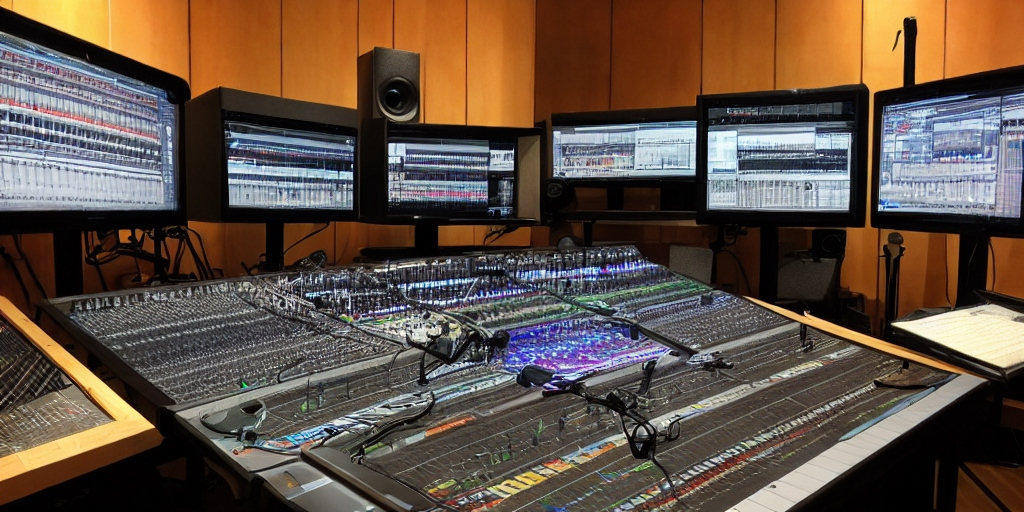
The Art of Mixing: How it Leads to a Perfect Master
As professional audio mastering software, we understand the importance of a great mix in achieving the perfect master. But what exactly is mixing, and why is it such an essential part of the music production process? In this article, we'll explore the art of mixing, share some tips and tricks, and provide a real-world example of how we helped a client achieve a perfect mix and master.
What is Mixing, and Why is it Important?
Mixing is the process of combining individual tracks or elements of a recording to create a balanced and cohesive whole. A mix engineer uses various techniques such as EQ, compression, panning, and reverb to ensure that each instrument and vocal sits well in the mix and contributes to the overall sound. A well-mixed track can make all the difference in the final master, as it provides a solid foundation for the mastering process.
The Importance of a Professional Mix
A professional mix is crucial for a variety of reasons. First and foremost, it sets the tone for the final product. A poorly mixed track can be challenging to fix during mastering, which can lead to a subpar master. Additionally, a great mix can help highlight the strengths of a song and make it more enjoyable for the listener. It can also help ensure that the track sounds great across various playback systems, including speakers and headphones.
Tips and Tricks for Professional Mixing
So, how can you ensure a professional mix? Here are a few tips and tricks that we use at Chosen Masters:
- Start with a clean slate: Before you start mixing, make sure your recording is clean and free of any unwanted noise or distortion.
- Organize your tracks: Organize your tracks in a logical order, and label them correctly. This will make it easier to navigate and make changes as needed.
- Use reference tracks: Use reference tracks to compare your mix to a professional-sounding track. This can help you identify areas that need improvement.
- Focus on balance: Achieving a balanced mix is essential. Ensure that each element of the recording is audible and contributing to the overall sound.
- Use automation: Automation can help add dynamic range to a track and make it more engaging for the listener.
A Real-World Example
To give you a better idea of how the art of mixing can lead to a perfect master, let's look at a recent client session. Our client had recorded a new song, and we were tasked with mixing and mastering it. The track had a variety of elements, including vocals, guitar, bass, drums, and synth.
We started by organizing the tracks and cleaning up any unwanted noise or distortion. Next, we focused on achieving a balanced mix. We used EQ and compression to ensure that each element of the recording was audible and sitting well in the mix. We also used panning and reverb to create a sense of space and depth.
Once we were happy with the mix, we moved onto mastering. Thanks to the great mix, the mastering process was a breeze. We added a bit of EQ and compression to ensure the track sounded great across all playback systems. Finally, we delivered a perfect master that our client was thrilled with.
In Conclusion
The art of mixing is an essential part of the music production process, and it can make all the difference in achieving a perfect master. By following these tips and tricks, you can ensure a professional mix that sets the tone for a great final product. If you're looking for professional audio mastering software, look no further than Chosen Masters. We're here to help you achieve the perfect mix

History of Mixing Music
The art of mixing music has been around since the early days of recording. In the early 20th century, recording technology advanced to the point where it became possible to record multiple instruments and vocals separately and then mix them together in a way that wasn't possible before.
In the 1940s and 1950s, the introduction of magnetic tape recording allowed for even greater control over the recording and mixing process. Engineers could now edit and manipulate recordings with greater precision, allowing for more complex and layered mixes.
In the 1960s, the Beatles' producer George Martin pioneered many innovative mixing techniques, such as using tape loops and manipulating tape speeds, that are still used today. This era saw the birth of the concept album, with bands like Pink Floyd and The Who experimenting with complex and layered mixes that pushed the boundaries of what was possible.
In the 1970s, the introduction of 16-track and 24-track recording allowed for even greater control over the mixing process. This era saw the rise of disco and the use of mixing techniques such as compression and EQ to create a tight and punchy sound that was perfect for dancing.
In the 1980s, advances in digital recording and mixing technology allowed for even greater precision and control over the mixing process. This era saw the rise of electronic music and the use of sampling and digital effects to create new and innovative sounds.
Today, the art of mixing music continues to evolve and innovate. With the rise of home recording technology and digital audio workstations, more and more musicians and producers are taking on the role of mixing engineer. However, the principles and techniques of professional mixing that have been developed over the past century continue to be used and refined, ensuring that great mixes will always be a key part of the music production process.
The Yin and Yang of Music Production: How Mastering Complements Mixing for a Professional-Sounding Final Product
While mixing is an essential part of the music production process, it is only one half of the equation. The other half is audio mastering, which involves preparing the final mix for distribution by ensuring that it sounds consistent and polished across different playback systems.
The Yin and Yang of Mixing and Mastering: How They Work Together
In many ways, mixing and mastering are two sides of the same coin. Mixing focuses on the individual elements of the recording, such as the levels, panning, and EQ, to create a cohesive and balanced mix. Mastering, on the other hand, focuses on the overall sound of the mix, making sure that it sounds good on a variety of playback systems and that it meets industry standards for loudness and clarity.
The Benefits of Proper Mixing in the Mastering Process
Without proper mixing, the mastering process can only do so much to improve the final product. If the mix is imbalanced or inconsistent, the mastering engineer will have a much harder time making it sound polished and professional. Conversely, if the mix is done well, the mastering engineer can use their expertise to enhance the overall sound and make it sound even better.
The Benefits of World Class Mastering
That being said, it's important to note that truly amazing mastering can't completely save a really terrible mix. While mastering can certainly improve the sound of a mix, it can only work with the material it's given. If the mix is severely imbalanced or distorted, there may be limitations to what even the most skilled mastering engineer can do, but our mastering engine has been known to shock many of us and our users!
While a great mix is crucial for a polished final product, there are cases where even a poorly mixed track can be salvaged with world class audio mastering, like you get from Chosen Masters. A professional mastering process can use a variety of techniques to enhance the sound of a mix, including EQ, compression, and transient retention, among others.
Furthermore, finding a mastering engineer who can truly work magic on a poorly mixed track is rare. It takes years of experience and expertise to develop the skills necessary to turn a bad mix into a professional-sounding final product. However, when you do find these kind of magical results, it can be a game changer for your music. By combining expert mixing and mastering, you can create recordings that truly stand out in a crowded industry.

Legendary Recording Engineers
Recording engineers play a critical role in the music industry. They are responsible for capturing and enhancing the sound of a recording, creating a sonic landscape that brings a song to life. Over the years, there have been many famous recording engineers who have made significant contributions to the music industry. Here are some of the most well-known names:
- Geoff Emerick - Emerick is best known for his work as an engineer on The Beatles' albums, including "Revolver," "Sgt. Pepper's Lonely Hearts Club Band," and "Abbey Road." He was known for his innovative techniques, such as placing microphones close to instruments to create a more intimate sound.
- Tom Dowd - Dowd was an American recording engineer and producer who worked with artists such as Aretha Franklin, Ray Charles, and Eric Clapton. He is credited with pioneering multi-track recording, which allowed for more complex and layered recordings.
- Phil Spector - Spector was a record producer and engineer who worked with many famous artists in the 1960s, including The Ronettes, The Crystals, and The Beatles. He is known for his "Wall of Sound" production style, which involved layering multiple instruments and voices to create a dense and powerful sound.
- Eddie Kramer - Kramer is a British recording engineer and producer who has worked with some of the most famous rock bands of all time, including The Rolling Stones, Jimi Hendrix, and Led Zeppelin. He is known for his ability to capture the raw energy of a live performance in the studio.
- Rick Rubin - Rubin is a record producer and founder of Def Jam Recordings. He has worked with a diverse range of artists, including Johnny Cash, Beastie Boys, and Adele. Rubin is known for his stripped-down, minimalist approach to production, which allows the artist's talent to shine through.
- George Martin - Martin was a British record producer and arranger who is best known for his work with The Beatles. He is often referred to as "the fifth Beatle" for his significant contributions to the band's sound and success. Martin is known for his use of orchestral arrangements and innovative production techniques.
These are just a few examples of the many famous recording engineers who have made significant contributions to the music industry. Their innovative techniques and dedication to sonic excellence have shaped the sound of music for generations to come.
So, in a sense, mixing and mastering are like yin and yang. They are two complementary processes that work together to create a great sounding final product. While mixing is focused on the details of the individual tracks, mastering is focused on the bigger picture, ensuring that the final product sounds great no matter where it's played. By understanding the importance of both mixing and mastering, music producers can create truly professional and polished recordings that stand out in a crowded industry.
Want more great audio tips? Checkout other articles from our blog!